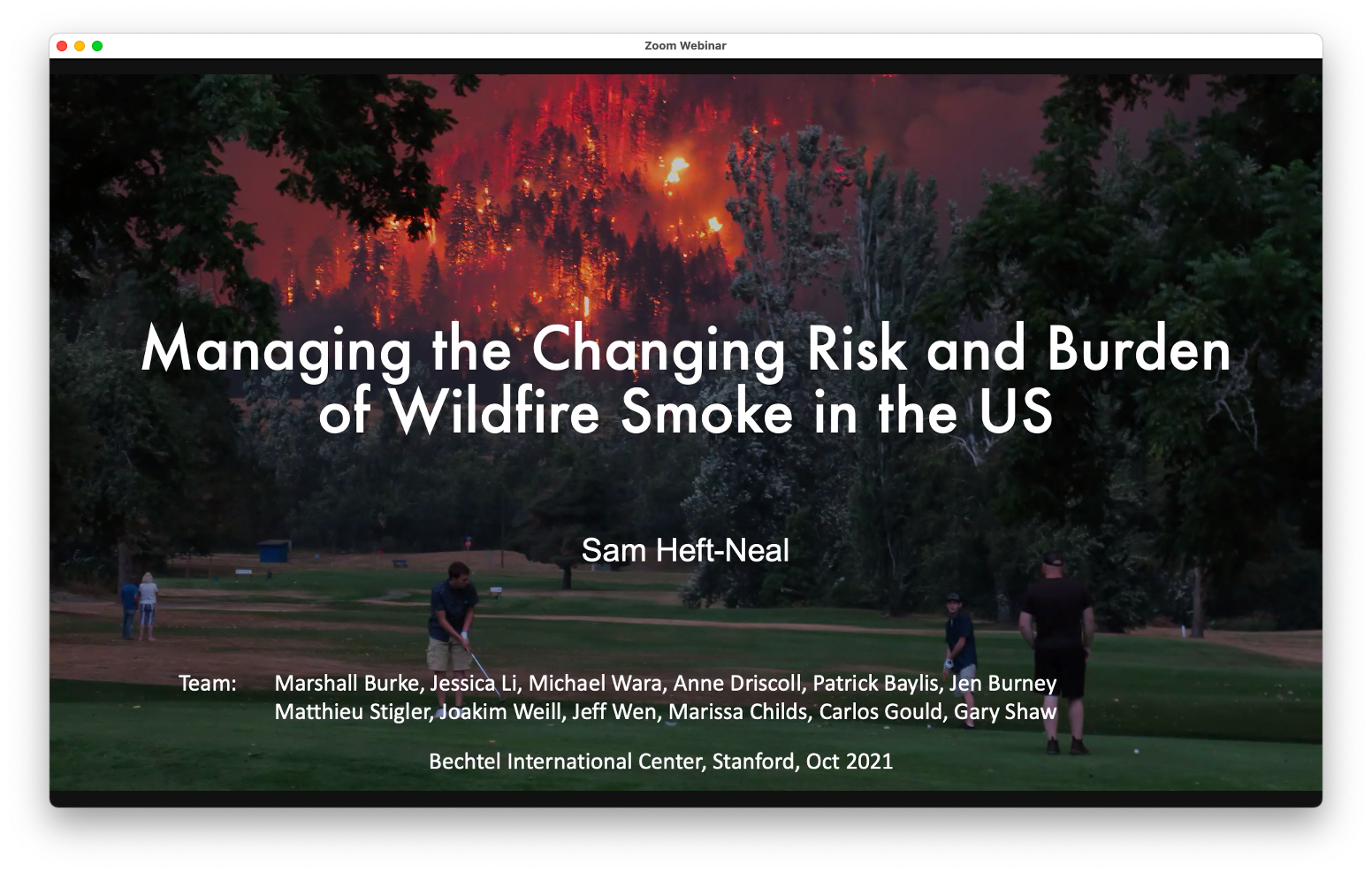Despite declines in overall pollution levels over the last few decades, an increase in wildfires in recent years is beginning to “reverse these trends,” said Stanford research scholar Sam Heft-Neal, who studies health, pollution and the environment, in a Tuesday lecture sponsored by the Bechtel International Center.
Wildfires are now the cause of “much of the overall pollution in the U.S.,” and in particularly adverse years, wildfire smoke can contribute more than half the total amount of airborne particulate matter that’s smaller than 2.5 micrometers in diameter (PM2.5) in the West and Northwest. Inhalation of these particles, which are 30 times smaller than the average human hair, can lead to a variety of health problems, including heart attacks and respiratory symptoms.
Additionally, an estimated 3.7% of the excess preterm births in California from 2007 to 2012 could be attributed to maternal wildfire smoke exposure, according to Heft-Neal.
California’s 2020 wildfire season was one of the worst in the state’s modern history, according to the California Department of Forestry and Fire Protection.
In their 2007 to 2012 study investigating wildfire smoke exposure and preterm birth risk, Heft-Neal and collaborators Anne Driscoll, Wei Yang, Gary Shaw and Marshall Burke analyzed California birth certificates over a six-year period, using wildfire smoke measurements to estimate the mothers’ smoke exposures over the course of pregnancy. The researchers found strong associations between “medium and high intensity smoke days” and increased preterm birth risk.
Heft-Neal explained that it can be difficult to measure wildfires’ contributions to PM2.5 levels. Readings from equipment like ground monitors often reflect PM2.5 contributions from sources other than wildfire smoke, he said. He added that the study of “infiltration” — how much wildfire smoke pollution from outside ends up inside — is important to understanding wildfire smoke’s impact on individual health. Americans spend 90% of their time indoors, where pollutant concentrations often exceed outdoor levels.
To address the difficulty of measuring how wildfires contribute to PM2.5 levels, Heft-Neal and collaborators Burke, Driscoll, Jiani Xue, Jennifer Burney and Michael Wara developed a statistical model of pollution using information on factors like “pollution-generating activity.” The model, which was published in January, allowed the researchers to compare scenarios where “wildfire smoke is as we observed in reality” with imagined scenarios with no wildfire smoke in order to estimate wildfires’ impact on PM2.5. Heft-Neal added that the use of “low-cost pollution monitors” has helped researchers better estimate infiltration, despite shortcomings like the inability to provide data on random samples.
These methods have enabled Heft-Neal and other researchers to better understand wildfires’ contributions to air pollution and helped them begin to develop ideas for policy improvements.
“You can’t just tax the people who are producing the wildfire emissions,” Heft-Neal said. He added that controlled burning, a fuel management strategy that involves intentionally burning away potential wildfire fuel, is disincentivized by current air quality regulations.
While avoiding other pollutants, such as power plants, can be straightforward, Heft-Neal said that avoiding wildfire smoke is more complicated — especially in periods when “basically the entire state is covered and everybody is exposed.”
“If you care about the health impacts from pollution in the U.S., and especially in California, then you have to care about wildfires,” he said.
